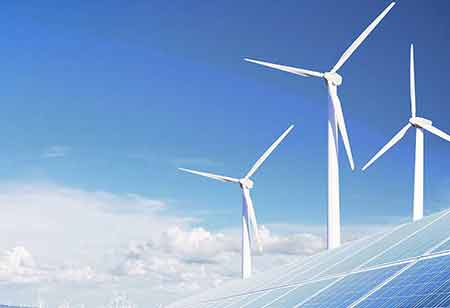Thank you for Subscribing to Energy Business Review Weekly Brief
Importance Of Compressor Technology

By
Energy Business Review | Saturday, January 29, 2022
Stay ahead of the industry with exclusive feature stories on the top companies, expert insights and the latest news delivered straight to your inbox. Subscribe today.
Compressors are huge mechanical devices that raise the pressure on gas and its volume by utilizing rotational force or piston movement.
Fremont, CA: Compressors are a crucial link in the value chain of energy. They also contribute to energy conversion by assisting in reducing emissions. Compressors are giant mechanical devices that increase the pressure on gas and its volume by utilizing rotational force or piston movement. They are crucial across the entire energy value chain, enhancing numerous operations' efficiency and contributing to emissions reductions.
Compressors are used to transfer energy: Gas reserves are rarely located near where power is required; the gas must be delivered through pipeline or ship. Channels like those connecting Russia to western Europe or Canada to the United States usually span thousands of miles.
Approximately every 70 miles, compression stations are raised to compensate for natural pressure loss and 'push' the gas to the following station along the route. When pipelines are not viable, natural gas is compressed by ten or more to chill and liquefy it earlier, ecstatic on specialist ships. Once the liquefied natural gas (LNG) arrives, it is regasified and piped to cities, industrial clusters, and large energy users.
Compressors will be critical in allowing the hydrogen revolution: Compression technologies will be vital for realizing hydrogen's full energy potential. Compressors are designed to manage and pressurize gases—and hydrogen is no exception. Hydrogen is frequently produced at low pressures (20–30 bar or less) and must be compressed before transportation.
Therefore compressors are essential in the compression and transportation of hydrogen. Most compressors used for gaseous hydrogen compression are either reciprocating positive shift compressors or centrifugal compressors.
A reciprocating compressor moves a piston back and forth with a driver's assistance. This action compresses the hydrogen by reducing its volume. Reciprocal compressors are the most frequently utilized type in applications requiring a high compression ratio.
Given the low molecular weight of hydrogen, a hydrogen centrifugal compressor must work at impeller tip speeds quicker than a natural gas compressor to obtain the same compression ratio with fewer compressors.
A centrifugal compressor is chosen for pipeline transport applications because of its high throughput and modest compression rations.
It is vital to note that compressors now account for up to 30% of the cost required to build a refueling station. In addition, compression technologies that are safe, efficient, and dependable can assist in ensuring good hydrogen purity at the needed pressure.






